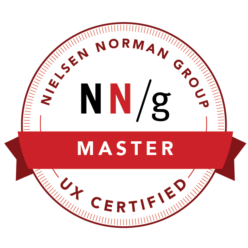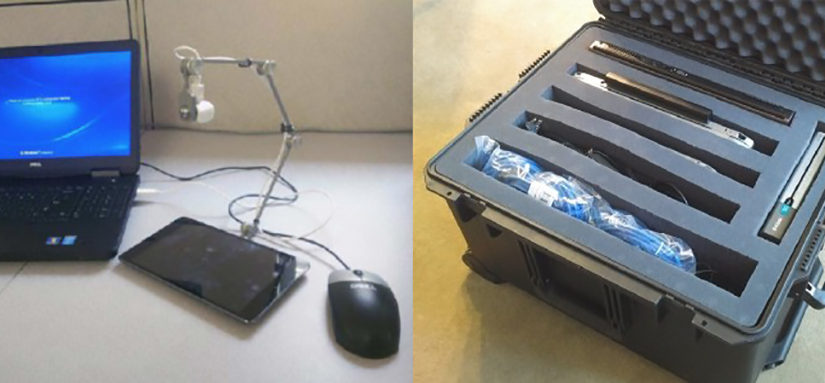Usability testing is a way to get data about how people use designs, so that decisions can be made that hopefully provide a user with a great website, web app, gadget, or service experience. Usability testing is the major tool-of-the-trade for user experience practitioners, it can be conducted remotely or in person, and it can be facilitated, moderated, or unmoderated.
As far as tools are concerned, there are many ways — open source and paid — that a UXer can conduct usability testing. Some popular paid tools offered by UserTesting and UserZoom allow a UXer to recruit an unlimited amount of individuals, and run different types of usability tests remotely. A UXer can use UserTesting and UserZoom’s tools locally, but they would have to recruit the users themselves.
However, often times the products and software that UXers are helping design and make require very specific users (e.g. a nurse manager, a board of education administrator, a research librarian, or even a active duty soldier), which can’t be recruited by UserZoom and UserTesting’s generic pool of paid users. On the off chance that there is an active duty soldier who has signed-up to do user testing with one of these services, and the UXer screens for these types of users, the resulting pool of users might not be large enough to provide significantly impactful user data.
In this case, UXers have to be able to travel to their specific users and perform moderated usability testing. Let’s face it, not everyone has the budget to bring in a specialized pediatrician into their local office every two-week sprint for a usability test. Also, this type of bootleg or guerilla usability testing usually has to be conducted within a time-crunch, and in an environment that the UXer has no control over.
Ergo, it’s important for UXers in this situation to be very adaptable, be able to change things on the fly to accommodate last minute users being added/removed, and workaround technical problems like having no access to wifi. Enter the mobile usability testing lab, a solution to travel, technological, and user research problems!
To build a mobile usability testing lab a UXer needs the following software, hardware, and travel accessories:
Software
-
- Free Recorder / Clearleft Silverback / TechSmith Morae Preferred
A UXer wants to be able to capture what’s happening on the screen. Any free screen and audio recorder will do, Silverback 3 is an ok usability testing app for Mac that includes webcam and audio, but TechSmith Morae for PCs is by far the best. Morae is where the majority of a UXer’s budget should be spent, because there is really no substitute for TechSmith Morae. Morae is the industry standard and is worth every penny because of its test builder, surveying, unlimited annotator, and result management tools.
- Free Recorder / Clearleft Silverback / TechSmith Morae Preferred
- UXSort / xSort
UXSort is a free card sorting application that allows usability professionals to make card sorting activities, manage users and cards, collect user card sorting data, analyze data, and create a final report. xSort is a free card sorting application for Mac aimed at user experience professionals and social scientists. There are other paid tools such as Optimal Workshop, which is great if you have the budget, but are certainly not necessary to get the user data from a card sort.
Hardware
-
- 1 Laptop / 2+ PCs & Power Cords Preferred
A UXer should make sure that whatever computer hardware they’re purchasing or using meets the technical requirements of the software installed (and actually works).
- 1 Laptop / 2+ PCs & Power Cords Preferred
-
- Built-In Webcam / External Webcam / External Webcam & Mr. Tappy Preferred
A UXer should want to capture what’s happening with the user’s expressions if they are stumbling, or if they are smiling. However, to record what a user is doing on a mobile device, an external webcam is needed instead of a built-in webcam. Mr. Tappy is a kit for recording mobile devices from a user’s point of view — without getting in their way — while capturing a user’s finger and thumb movements.
- Built-In Webcam / External Webcam / External Webcam & Mr. Tappy Preferred
-
- 1 Network Switch & Cables Preferred
A network switch is a quick, easy, and economical way to add high speed networking between multiple computers. Using TechSmith Morae to connect multiple observer computers to a recording computer, via a network switch, will let UXers do so without LAN networks or wifi access.
- 1 Network Switch & Cables Preferred
- 3 Mice Preferred
This almost goes without saying… users like using mice.
Travel Accessories
-
- Equipment Bag / Protective Travel Case Preferred
Carrying around all of your equipment is a concern. A UXer can shove everything into an unwieldy bag or backpack, but they could also use a protective travel case. A travel case keeps its contents safe from most external threats, features automatic pressure equalization valve for changes in altitude or temperature, and a retractable extension handle for travel.
- Equipment Bag / Protective Travel Case Preferred
- TSA Luggage Lock Preferred
In the United States the Transportation Security Administration (TSA) requires access to luggage without the passenger being present; to allow travelers to lock their luggage they have accepted certain locks which they can open and relock. If a UXer or a UX Team needs to travel via plane to conduct usability testing, and they are taking several laptops with them, this is a viable option.
Testing Setup w/ICECAM and Mr. Tappy (Left) / Mobile Lab and Protective Case (Right)
The most ideal situation is to have TechSmith Morae, three or more PCs (so UXers, Product Owners, and others can annotate simultaneously), an external webcam, Mr. Tappy, and a network switch. With his configuration a UXer or UX Team can rapidly pack-up, transport, setup, and execute usability test with little to no effort. However, just having a laptop and screen recording software will work as well.
Overall the budget on a mobile usability testing lab can be quite cheap — utilizing the hardware a UXer already has, and open source software — or range to rather expensive. It also can be something that a UX Team can work on over time, adding to the lab as funding becomes available.
Adaptability and versatility is what’s important in the long run, and in the age of Lean UX sprint cycles, a mobile usability testing lab could prove invaluable.

